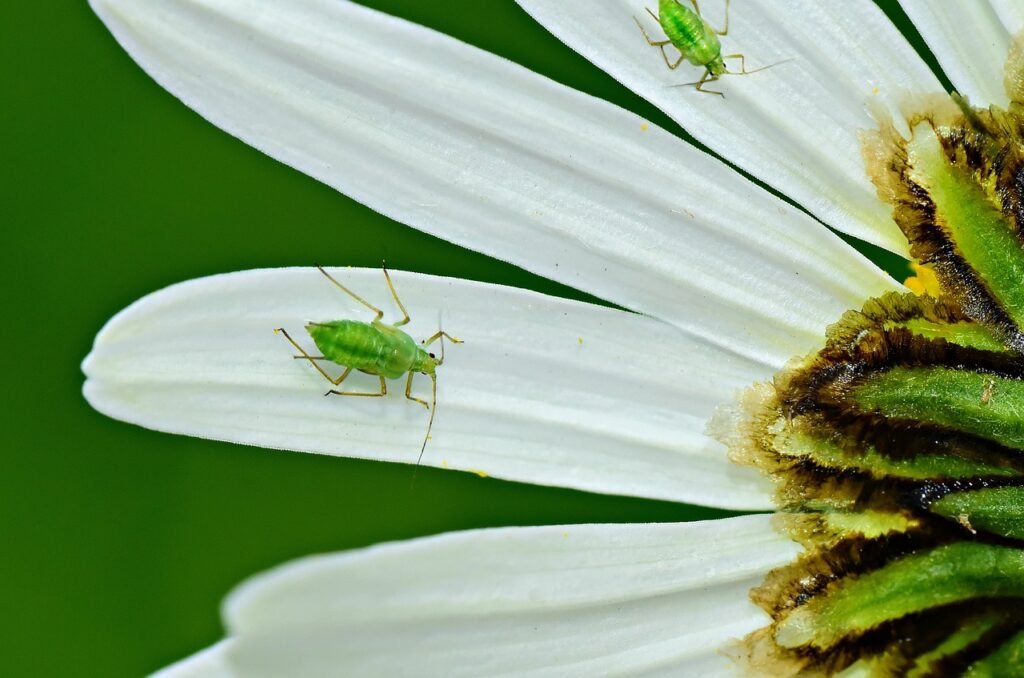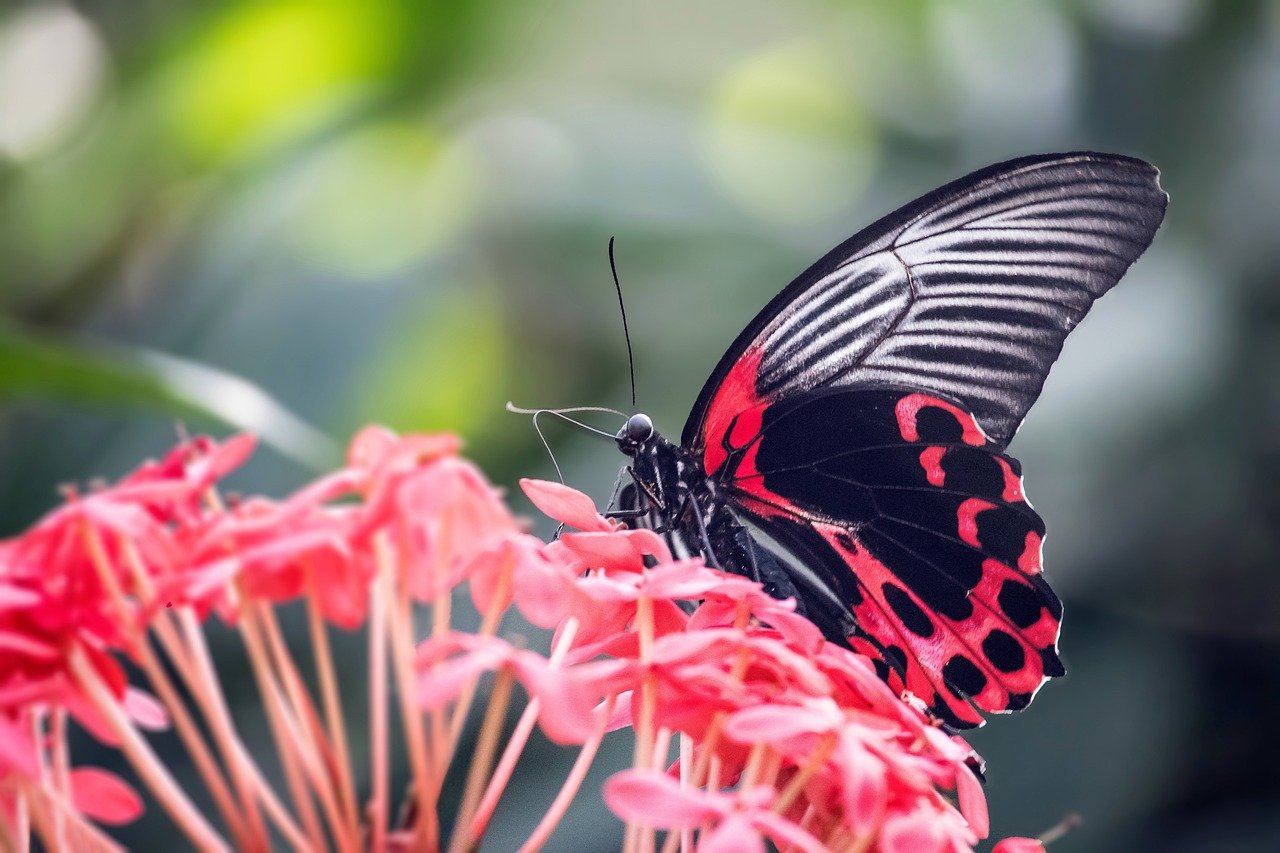
How to identify and manage aphids
Introduction to Aphids

Brief Overview of Aphids and their Impact on Plants
Aphids are tiny insects that can wreak havoc on your prized garden plants. These pesky critters have soft bodies and come in various colors like green, black, yellow, or red. They may seem harmless at first glance, but aphids reproduce rapidly and suck the sap out of plants, causing stunted growth and distorted leaves.
Their feeding can weaken plants and make them more susceptible to diseases. Aphids also excrete sticky honeydew residue that attracts ants and promotes the growth of sooty mold.
Importance of Identifying and Managing Aphids in Gardening
Identifying and managing aphids is crucial for maintaining a healthy garden. Failure to control aphid populations can lead to decreased plant vigor, reduced crop yields, and overall aesthetic decline in your garden.
By understanding how to spot aphid infestations early on and implementing effective management strategies, you can protect your plants from damage and ensure a bountiful harvest. Gardening is not just about planting; it’s also about nurturing your plants against common threats like aphids to help them thrive.
Identifying Aphids

Physical Appearance: Small, Soft-Bodied Insects with Pear-Shaped Bodies
When it comes to spotting these pesky little critters, aphids are definitely not hard to miss. They’re like tiny, soft-bodied aliens invading your plants with their pear-shaped bodies.
These creatures are usually no more than a few millimeters long and come in various colors, depending on the species. Their delicate bodies make them easy to squish between your fingers if you’re feeling brave enough.
Color Variations: Green, Black, Yellow, or Red Aphids
Aphids love to play the fashion game with their wardrobe choices. You might spot them sporting shades of green, black, yellow, or even a vibrant red hue.
It’s like a tiny insect fashion show happening right on your plants! By identifying the color variations of these critters, you can get one step closer to effectively managing their presence in your garden.
Common Locations: Underside of Leaves, New Growth Tips
If aphids were celebrities, the underside of leaves would be their favorite hiding spot – it’s like their exclusive VIP lounge. These sneaky bugs also love hanging out on new growth tips where they can feast on tender plant tissue like it’s an all-you-can-eat buffet. Keep an eye out for clusters of aphids in these prime real estate locations when scouting for potential infestations in your garden.
The Telltale Signs of Aphid Infestation

Sticky Honeydew Residue: A Sticky Situation
Picture this: you’re strolling through your garden, admiring your lush greenery, when suddenly you notice a sticky, shiny substance coating the leaves and stems of your plants. This telltale sign is none other than honeydew – not the sweet nectar you’d find in a beehive, but the sugary excretion left behind by aphids.
Aphids feed on plant sap and excrete honeydew as a byproduct, creating a sticky mess that can attract other pests and even encourage mold growth. So, if you spot this sticky residue on your plants, it’s time to investigate for aphids!
Distorted or Curled Leaves: Nature’s Artwork
Have you ever seen leaves on your plants that look like they’ve been twisted and contorted into strange shapes? Chances are, those funky-looking leaves are a result of aphid feeding. These tiny pests pierce plant tissues to suck out sap, causing leaves to become distorted or curled.
It’s like nature’s abstract art – but definitely not something you want to showcase in your garden. Keep an eye out for these unusual leaf deformities as they can be a clear indication of an aphid infestation.
Ants on Parade: Uninvited Guests
Imagine sitting down for a picnic only to find uninvited guests swarming around your food – not the most pleasant scenario, right? Well, in the world of aphids, ants play the role of these unwelcome party crashers. Ants are attracted to the sweet honeydew excreted by aphids and will often “farm” them for this sugary treat.
So, if you notice ants marching up and down your plants with purposeful determination, it could be a sign that aphids are nearby. Keep an eye out for this ant-aphid alliance as it can help you identify and address any potential infestations swiftly.
Natural Predators of Aphids

Ladybugs: Voracious Eaters of Aphids
When it comes to combating aphid infestations, ladybugs are like the superheroes of the garden world. These charming little beetles have a hearty appetite for aphids and can devour them by the dozens.
Ladybugs, also known as ladybirds or ladybird beetles, are not only effective predators of aphids but also add a pop of color to your garden with their red or orange bodies adorned with black spots. By releasing ladybugs into your garden, you can enlist these voracious eaters to help keep aphid populations in check naturally.
Lacewings: Feeding on Aphids at Every Stage
Another valuable ally in the battle against aphids is the lacewing insect. Both lacewing larvae and adults are avid consumers of aphids, making them a double threat to these pesky plant pests.
Lacewing larvae have a ferocious appetite and can swiftly decimate an aphid population by feasting on them at every stage of their life cycle. Not only do lacewings provide effective biological control of aphids, but they also contribute to the overall balance and health of your garden ecosystem.
Parasitic Wasps: Nature’s Stealthy Aphid Assassins
In nature’s intricate web of predator-prey relationships, parasitic wasps play a crucial role in controlling aphid populations. These tiny but mighty insects lay their eggs inside unsuspecting aphids, turning them into unwitting hosts for their developing young.
As the parasitic wasp larvae grow within the hapless aphid host, they eventually emerge as fully formed wasps ready to continue the cycle by seeking out more aphids to parasitize. While this may sound like something out of a sci-fi movie, parasitic wasps are actually beneficial allies in maintaining ecological balance and keeping aphid numbers in check without resorting to harmful chemicals.
Cultural Control Methods for Aphids
Pruning affected plant parts to remove aphid colonies
One effective way to combat aphids is by pruning the affected plant parts where aphid colonies have taken hold. By removing these infested areas, you can help stop the spread of aphids to healthy parts of the plant. Be sure to dispose of the pruned sections properly to prevent any remaining aphids from re-infesting your plants.
Encouraging beneficial insects by planting nectar-rich flowers
Another natural approach to managing aphids is by attracting beneficial insects that prey on them. By planting nectar-rich flowers like marigolds, daisies, or lavender near your infested plants, you can lure natural predators such as ladybugs and lacewings that feed on aphids. These beneficial insects act as a natural pest control method, helping keep aphid populations in check without the need for harmful chemicals that can harm your garden ecosystem.
Chemical Control Options for Aphid Management

Organic Options: Use Insecticidal Soap or Neem Oil
When it comes to combating those pesky aphids, sometimes nature’s own remedies can be the most effective. Insecticidal soap is a gentle yet potent solution that can be sprayed directly on aphids to disrupt their cell membranes and ultimately lead to their demise.
Neem oil, derived from the seeds of the neem tree, is another natural wonder that not only repels aphids but also interferes with their growth and reproduction. These organic options are safe for beneficial insects and won’t harm your plants, making them a popular choice among environmentally-conscious gardeners.
Synthetic Insecticides: A Last Resort
When all else fails and aphids continue to wreak havoc on your beloved plants, synthetic insecticides may be considered as a last resort. These chemical treatments are designed to swiftly eliminate aphid populations but come with potential risks to beneficial insects and the environment.
It’s crucial to follow instructions carefully when using synthetic insecticides and apply them sparingly only when absolutely necessary. Remember, prevention and natural control methods should always be prioritized before resorting to harsh chemicals that can upset the delicate balance of your garden ecosystem.
Preventive Measures Against Aphid Infestations

Regularly Inspecting Plants for Early Detection
One of the best ways to stay ahead of aphid infestations is by keeping a close eye on your plants. Make it a habit to inspect both sides of leaves, stems, and new growth tips regularly.
Look out for any clusters of small insects, sticky honeydew residue, or distorted leaves, as these are all signs of aphid presence. By catching aphids early on, you can prevent them from multiplying rapidly and causing significant damage to your plants.
Maintaining Plant Health Through Proper Watering and Fertilization
Aphids are attracted to weak and stressed plants, so maintaining the overall health of your garden can help deter infestations. Ensure your plants receive adequate water but avoid overwatering, as this can lead to fungal issues that attract aphids. Additionally, provide balanced fertilization according to the needs of each plant species.
Healthy plants are better equipped to resist aphid attacks and recover more quickly if infestations occur. By creating an optimal growing environment for your plants, you not only promote their well-being but also reduce the risk of aphid problems in the first place.
Additional Tips for Managing Aphids
Avoid Over-Fertilizing Plants Which Can Attract Aphids
When it comes to keeping those sneaky aphids away, less is more! Over-fertilizing your plants might make them all lush and green, but it also sends out an invitation to aphids for a never-ending feast. Stick to a balanced fertilizing routine and watch those aphids steer clear of your precious plants.
Interplanting with Aromatic Herbs like Mint or Basil to Repel
Who knew that these fragrant herbs could be the superhero defenders against aphid invasions? By strategically planting mint or basil around your vulnerable plants, you create a natural barrier that repels those pesky critters. Plus, you get the added bonus of fresh herbs for cooking – talk about a win-win situation!
Conclusion
In the battle against aphids, armed with knowledge and a few clever tricks up your sleeve, you can protect your beloved plants and keep your garden thriving. Remember, every challenge is just an opportunity for growth – both for your plants and your gardening skills. So go forth with confidence, knowing that you have the tools to conquer any aphid infestation that dares cross your garden path!




